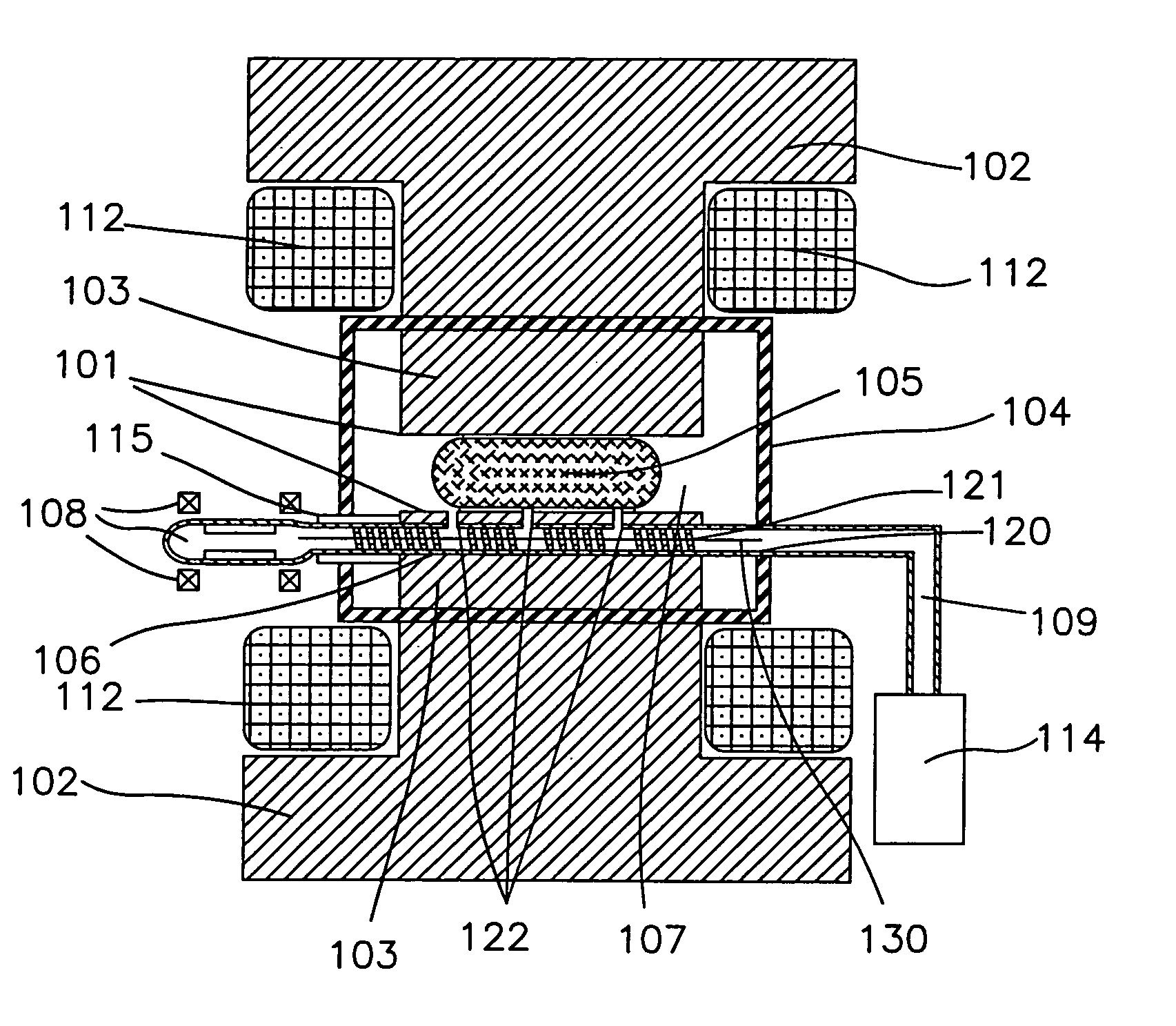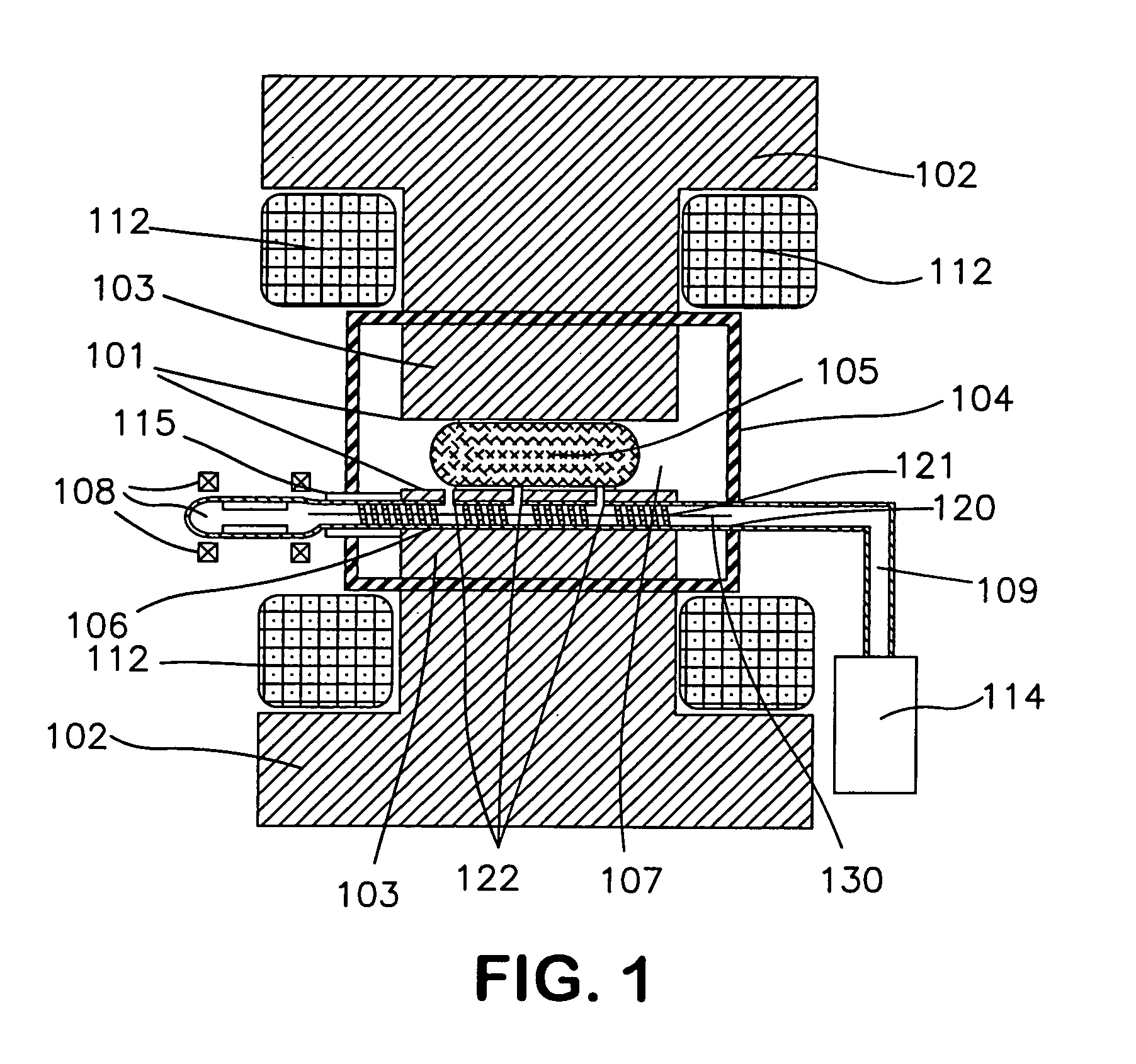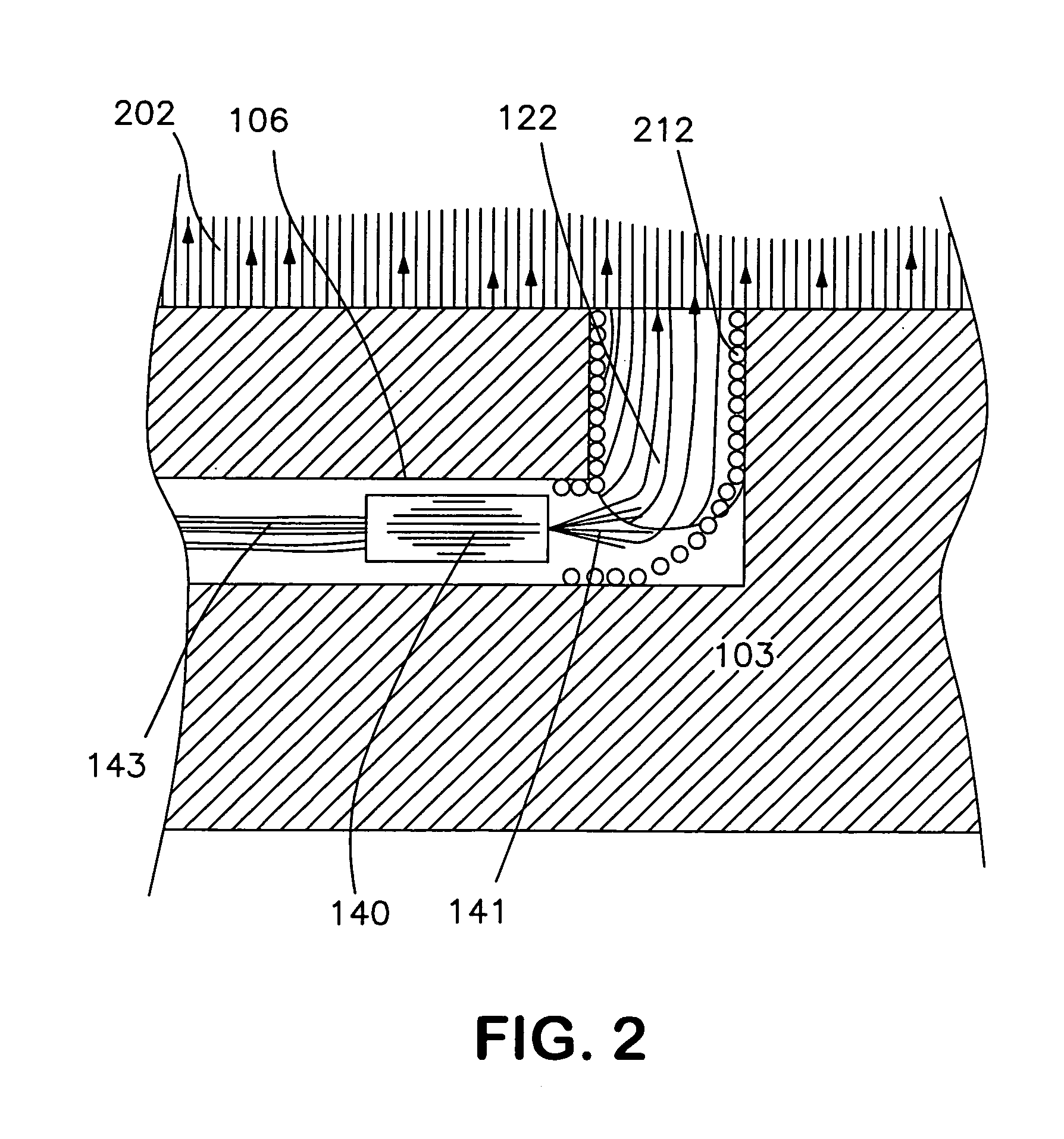Beam neutralization in low-energy high-current ribbon-beam implanters
a ribbon beam and high-current technology, applied in the direction of mechanical equipment, nuclear engineering, machines/engines, etc., can solve the problems of inability to achieve the ion focusing needed for proper operation, the inability to reduce the size of the ribbon beam,
- Summary
- Abstract
- Description
- Claims
- Application Information
AI Technical Summary
Benefits of technology
Problems solved by technology
Method used
Image
Examples
Embodiment Construction
[0055]FIG. 1 illustrates a cross section of the magnetic pole of a deflection magnet. Although those skilled in the art will recognize that the pole surface, 101, may actually be part of the underlying magnetic return yoke, 102, in the preferred embodiment the surfaces of the poles, 103, are located within the vacuum chamber, 104, rather than outside it. The magnetic field is produced by the coils, 112. This allows the magnetic poles to be as close as needed to the trajectories of the ion beam, 105, without wasting distance for a wide vacuum envelope that needs thick walls to withstand atmospheric forces. Actively variable fields may be introduced using surface windings that are detailed in a companion patent application entitled “Broad Energy Range Ribbon Ion Beam Collimation Using a variable Gradient Dipole” by Kenneth H. Purser and Norman L. Turner.
[0056]It can be seen that a modest diameter hole, 106, is drilled through the width of the pole plate, 103, defining a tunnel. While ...
PUM
 Login to View More
Login to View More Abstract
Description
Claims
Application Information
 Login to View More
Login to View More - R&D
- Intellectual Property
- Life Sciences
- Materials
- Tech Scout
- Unparalleled Data Quality
- Higher Quality Content
- 60% Fewer Hallucinations
Browse by: Latest US Patents, China's latest patents, Technical Efficacy Thesaurus, Application Domain, Technology Topic, Popular Technical Reports.
© 2025 PatSnap. All rights reserved.Legal|Privacy policy|Modern Slavery Act Transparency Statement|Sitemap|About US| Contact US: help@patsnap.com



